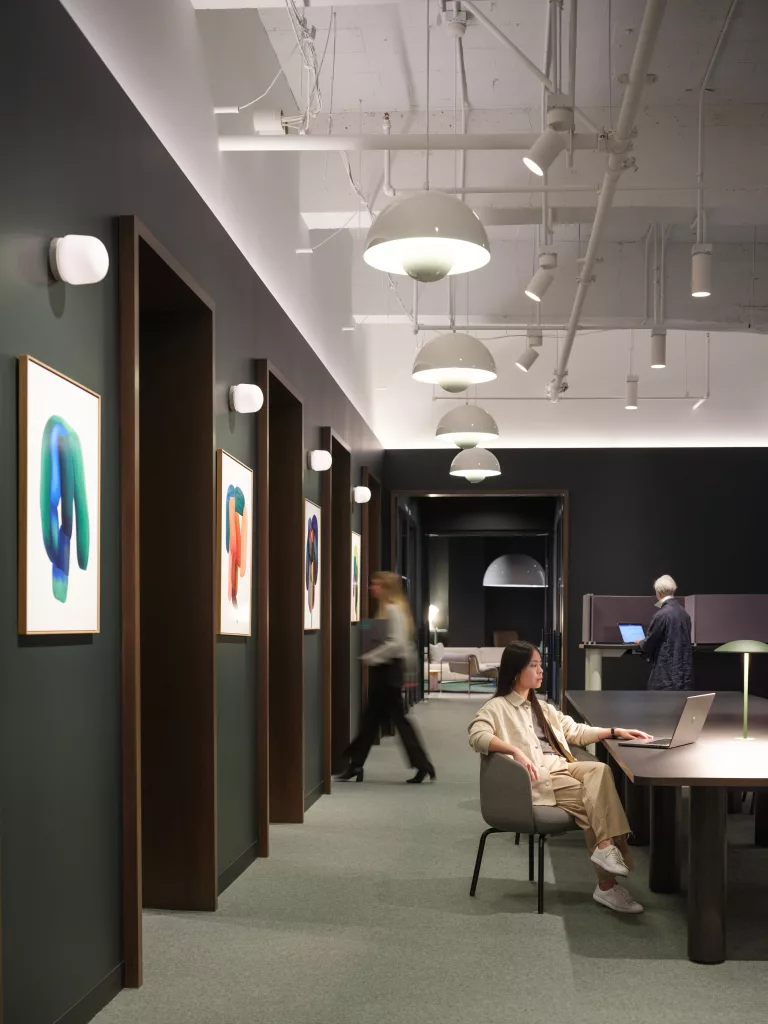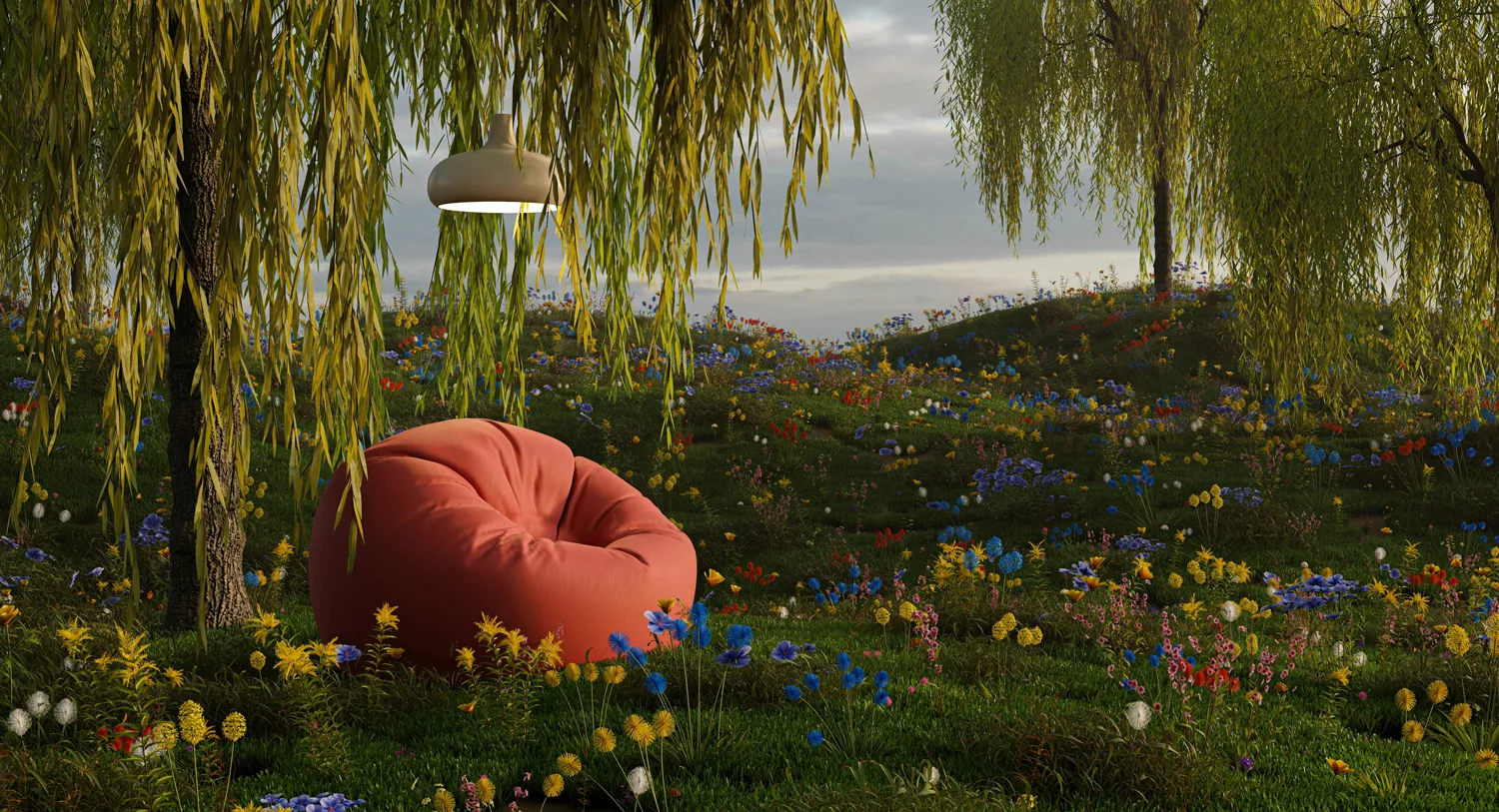Company leaders are thinking about the office differently and bringing on design teams with anthropologists and psychologists who understand human behavior.
Designers have long been “place-makers,” looking at the built environment through an emotional lens and thinking about the people who spend time in that space. Meanwhile, many employers have long looked at the office as a “space,” often striving to pack as many people into square footage as possible for efficiency.
That perspective is changing. More clients and their leadership teams are increasingly embracing the idea of “place-making,” or working to ensure people feel comfortable and welcome in a workplace to maximize the experience, even if they’re only there a few days a week.
“It’s about creating a space that people want to be in, creating a magnet,” says Kay Sargent, senior principal and director of thought leadership at HOK, a global design, architecture, engineering and planning firm.
As a result, designers are leveraging specialists in the science of human nature, including cultural anthropologists, environmental psychologists, and other experts on their teams. The idea is to look at the how and the why of human behavior and gain a deeper understanding of the impact the built environment has on individuals.

Designing the Office for Human Behavior
A cultural anthropologist might bring ethnographic studies about human behavior. Neurodiversity advocates might look at how a space impacts neurodiversity to ensure it addresses sensory needs. An environmental psychologist might look at how color impacts mood or how the layout works to improve anxiety or feelings of safety. Local art consultants can create a hyper-local place with local art that has identity and speaks to inclusion and belonging.
“How do you craft a place that encompasses the spectrum of the human experience?” says Cheryl Durst, CEO of the International Interior Design Association, a non-profit with 15,000 members in 58 countries. That idea, she says, is the epitome of hospitality design and healthcare design and public spaces and cultural institutions, and now it’s a concept being embraced in commercial design.
HOK is one firm that is increasingly applying the science of design, not just the art of it, says Sargent. “Organizational anthropologists and environmental psychologists are really starting to influence what we’re doing,” she says.
Designing the Office for the Psyche
Environmental psychologists often bring a deep understanding of the human psyche, how people respond to the elements within the space, whether they feel safe and how the built environment is impacting them. They look at how room and object dimensions, ceiling height and floor plans all influence our psychology. How shapes, seen or felt, mold our experiences. How emotions and behavior are affected by colors, patterns, and light intensity. How textures influence our emotions and sound impacts our mental state.
“You’re trying to tune the space so that people can perform cognitively to their full potential,” says Sally Augustin, principal at Design with Science, a Chicago consulting firm that works to inform design with applied psychology.
Augustin typically starts by looking at the goals and needs of an organization, collecting data through surveys, interviews and observation, looking at organizational cultures, national cultures, language, and personality types, and then analyzing the space itself to make recommendations that will inform the design.
Those suggestions run the gamut and impact all the senses. For instance, the color red has been shown to reduce analytical thinking, so Augustin recommends minimizing it in any place where people need to think clearly. Green, meanwhile, has been shown to enhance creative performance.
Smell and texture can impact a space too: The scent of green apples, for example, that’s pumped through the HVAC system, can make a space feel bigger, sharper textures can make a space seem a little more energetic and softer textures make a space feel more comforting. Floor patterns can invite different psychological reactions, too. Squares, hexagons and rectangles in the carpet on the floor, for instance, can encourage people to move briskly along through a corridor, she says.
“Each project is different,” Augustin says. “It’s like a puzzle with lots of pieces that have to fit together for a positive outcome.”

Designing the Office for Culture
Cultural anthropologists, meanwhile, explore group dynamics, when people work better, how culture is created and felt, how people feel about being together in spaces, whether they feel safe and whether they feel a sense of belonging. What fosters those societal connections can vary by region, industry and company.
They may look carefully at spatial layout, lighting, acoustics, and ergonomics, the work practices of different employees, the hours they work, the lighting they like, and what they do in certain spaces. They listen to the stories of various employees, observing how they navigate and derive meaning from the workplace and tune into nuances and differences across genders, race, ethnicities, ages and life experiences. The idea is to create designs that make for more inclusive and equitable workplaces.
The hybrid era makes things more complicated for companies trying to understand the behavior of people and the idea of place. When people worked remotely during the pandemic, we hit the highest level of loneliness and burnout. But when it comes to returning to the office and community, people may initially feel a lot of stress and anxiety, says Sargent.
“It’s about understanding the real dynamics and what’s really causing the issues and finding the sweet spot in the middle,” Sargent says. “It’s about truly understanding who you are as an organization and focusing on that.”
